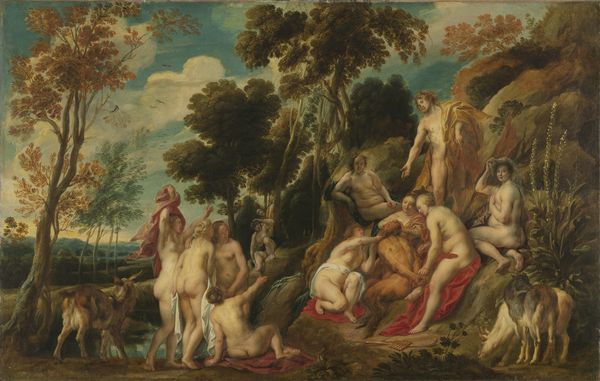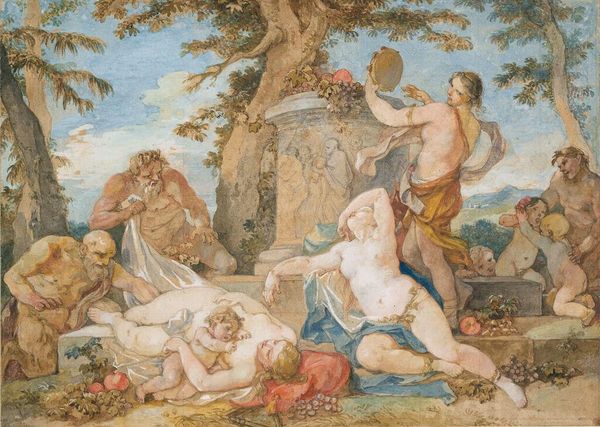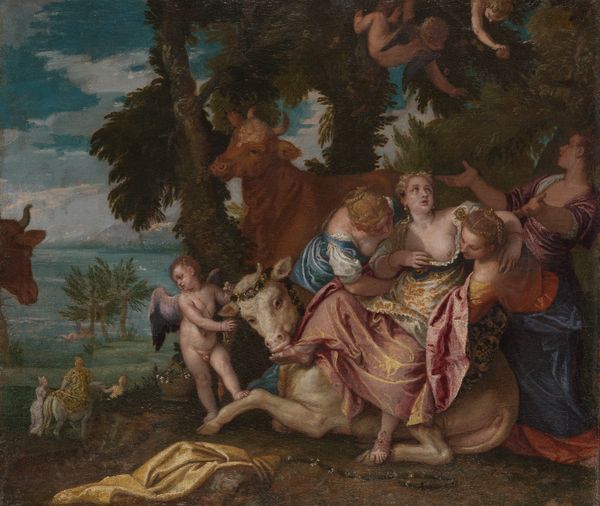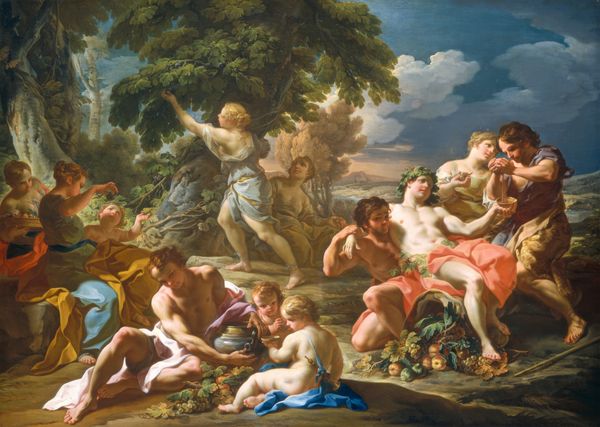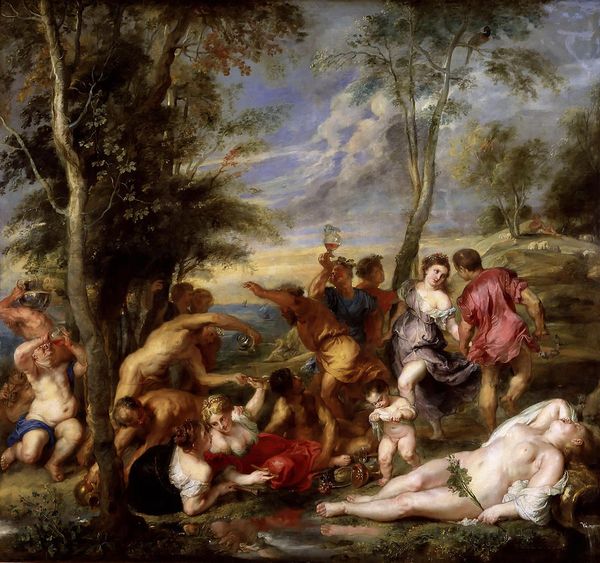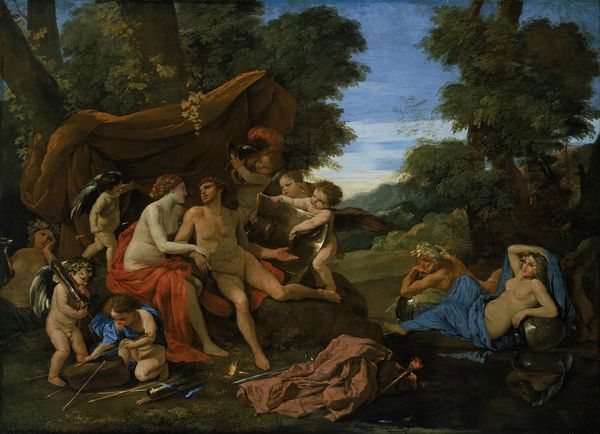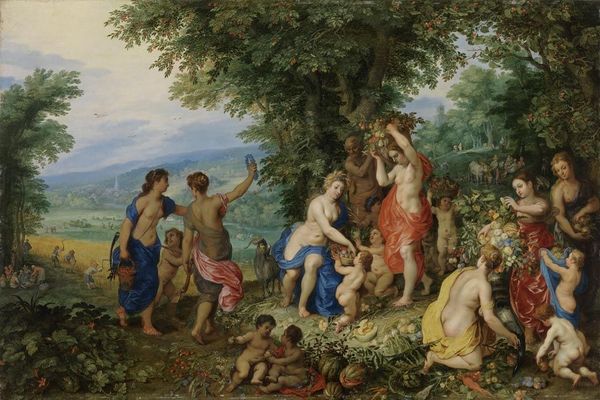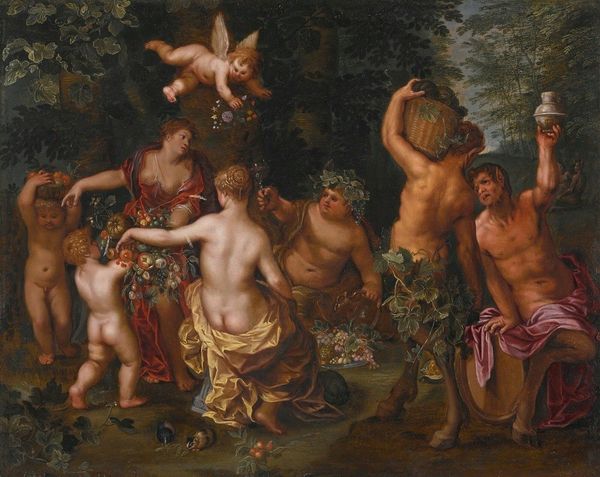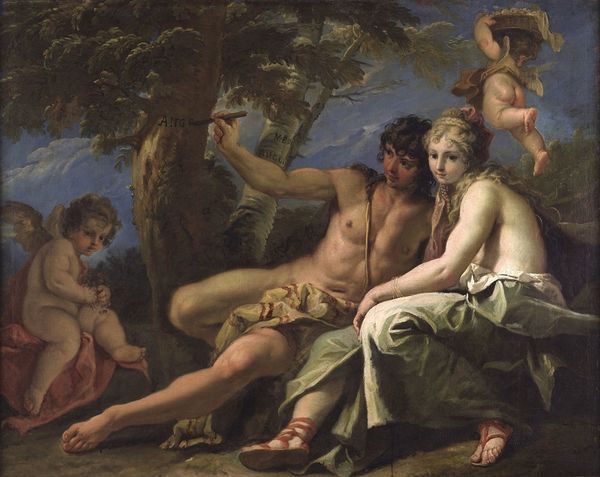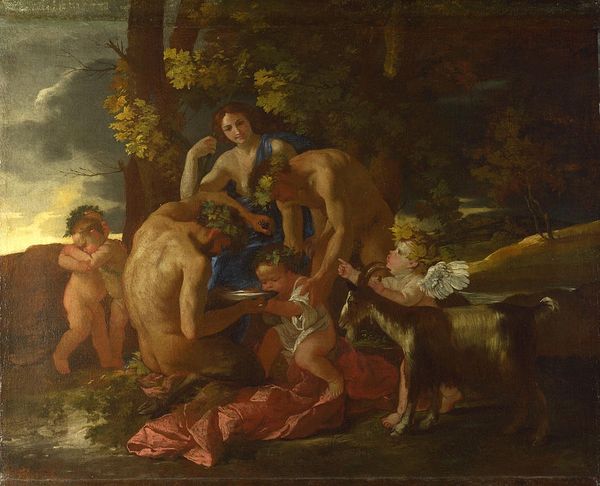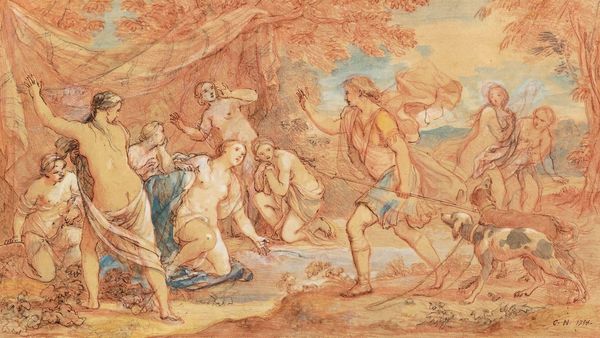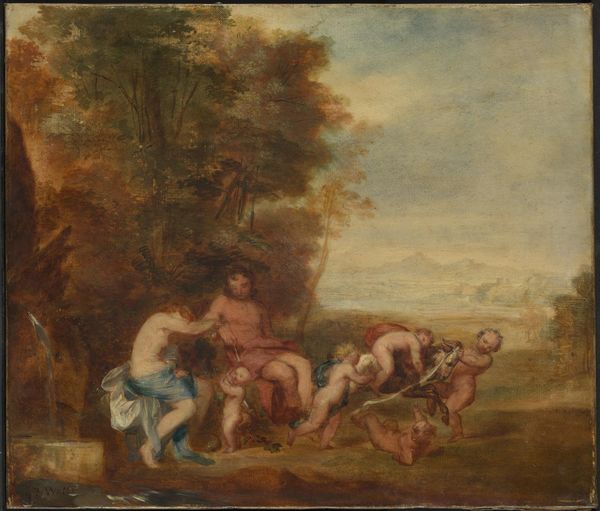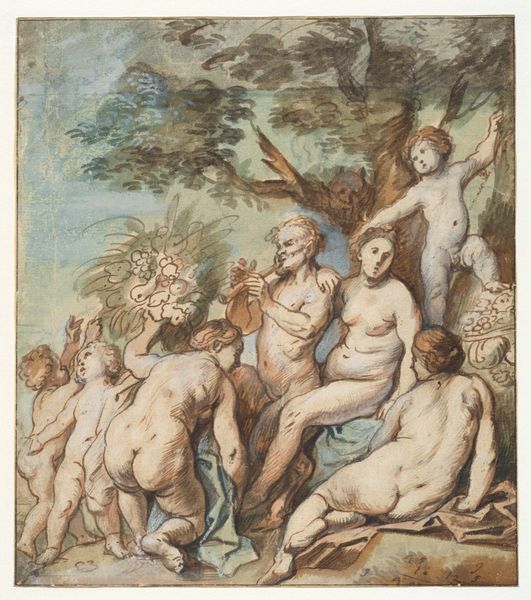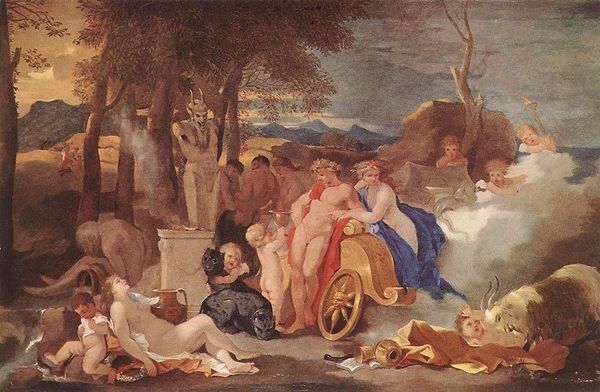
painting, oil-paint
#
allegory
#
painting
#
oil-paint
#
mannerism
#
oil painting
#
history-painting
#
nude
#
watercolor
Copyright: Public domain
Curator: This is Bartholomeus Spranger's oil painting, "Competition between Apollo and Pan," created around 1583. What strikes you initially about it? Editor: Well, there’s certainly a lot happening! My first impression is… chaotic, almost deliberately so. It's teeming with figures in a somewhat unsettling landscape. There's a real sense of drama. Curator: Indeed! The piece presents the mythological musical contest between Apollo, representing divine order, and Pan, representing primal nature. Notice how Spranger uses these figures as symbols within a highly intellectualized Mannerist style. The cultural memory of the Apollo versus Pan narrative is potent here. Editor: And this 'intellectualized style,' as you put it, informs the courtly tastes of the time, right? Spranger was the court painter to Rudolf II in Prague. I can't help but wonder about the implications of staging this scene. Who would have identified with Pan? What anxieties might this performance assuage? Curator: The choice of subject matter, steeped in allegorical weight, allowed the patrons of the art to express the power of harmony over discordant chaos. Apollo’s lyre versus Pan's pipes... Order against nature. Note how this contest reflects, even subliminally, political or philosophical contestations happening in Prague at that very time. Editor: It's fascinating to think about the painting's political resonance within its original social milieu. But I'm struck by the sheer density of it all. Every figure seems entwined with the others; it lacks the clear, crisp delineation that one often sees. What do you make of the compressed space? Curator: It echoes Mannerism’s break from High Renaissance ideals. The emotional intensity and complexity are given preference, even if it meant compressing the figures, challenging visual expectation and harmonious balance. Spranger wants the viewer to feel something akin to awe or astonishment. There's an intense psychological depth on offer, the raw competition playing out. Editor: So, we see here both the continuity of classical themes being re-interpreted, and a new kind of sensibility coming into play. Curator: Precisely! It’s an incredible instance of how mythology intersects with immediate social and aesthetic concerns, forming visual metaphors that invite deep analysis. Editor: Absolutely. It is as much a reflection on art itself as it is a mythic encounter, with that original context providing insight into how that art functions within a given set of conditions.
Comments
No comments
Be the first to comment and join the conversation on the ultimate creative platform.
